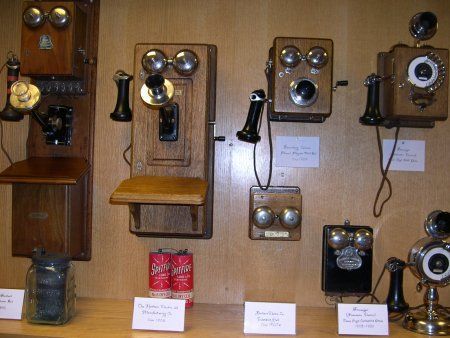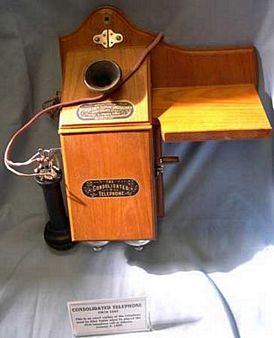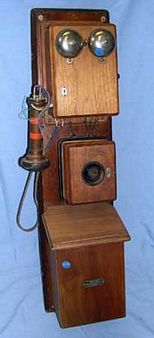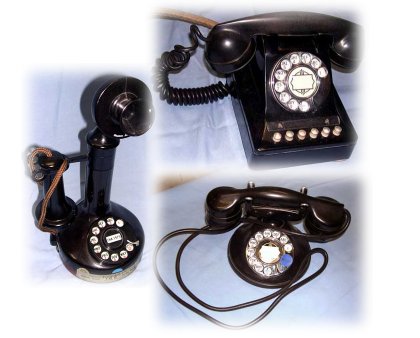The Telephone Historical Centre has an extensive collection of antique telephones and telecommunications technology. Through hands-on exhibits, visitors can interact with some of the artefacts and experience history first hand. The museum also recently introduced QR codes (two-dimensional bar codes) at some of the exhibits allowing visitors to learn more information about the artefacts using their smart phones.

The telephone artifacts and replicas in the collection trace Edmonton’s telephone history as it evolved from manual to automatic switching.

The manual phone system was first established in Edmonton in 1885. The method of line switching used for these kinds of phones was performed manually by switchboard operators at telephone exchanges. Here are but a few examples of manual system telephones you can find on display at the Telephone Historical Centre.

This is an original coffin style telephone that is a wall variation of the box style telephone, and one of the earliest examples of manual system telephones. While it represented a revolution in telecommunications technology, the coffin phone was rather crude and inefficient by modern standards. The main limitation of this phone was that it employed a single combination transmitter/receiver or “transceiver”. This meant that the person using the phone had to constantly transfer the wooden handle of the phone from the mouth to the ear in order to carry on a conversation.

Replica of one of two telephone units ordered for service in Edmonton in 1885 by Alex Taylor. The original phones were the first two telephones in Alberta, and were manufactured by the Consolidated Telephone Construction and Maintenance Company of London, England. This wall telephone represented an evolution in telephone design in that the transmitter and receiver were separated for easier use.

This is an example of a wooden three box wall telephone. The top box of the phone contained the magneto, or electric generator, a switch hook to hang up the handset and, of course, the bells. The middle box contained the transmitter, and the bottom box contained the glass wet cell batteries for the phone. The three box phone was in use right up to the turn of the 20th century.

The automatic telephone system was first introduced to Alberta when Edmonton set up an automatic exchange on 20 April 1908. The automatic systems relied upon signals from the telephones to mechanically make the switch linking one telephone to another. Among the first telephones to employ the automatic system were the rotary dial telephones. The dial on these phones contained a number of finger holes, each hole marked with a digit. The digit corresponded to the number of times the circuit would be broken as the dial returned to its resting position after being dialed. For example, if one dialed 4, the circuit would be broken 4 times. The signal pattern of making and breaking the circuit when dialing a particular telephone number would make the switch. No operator was needed for such a system. The next few images show some of the vintage rotary dial telephones currently at home in the Telephone Historical Centre.
